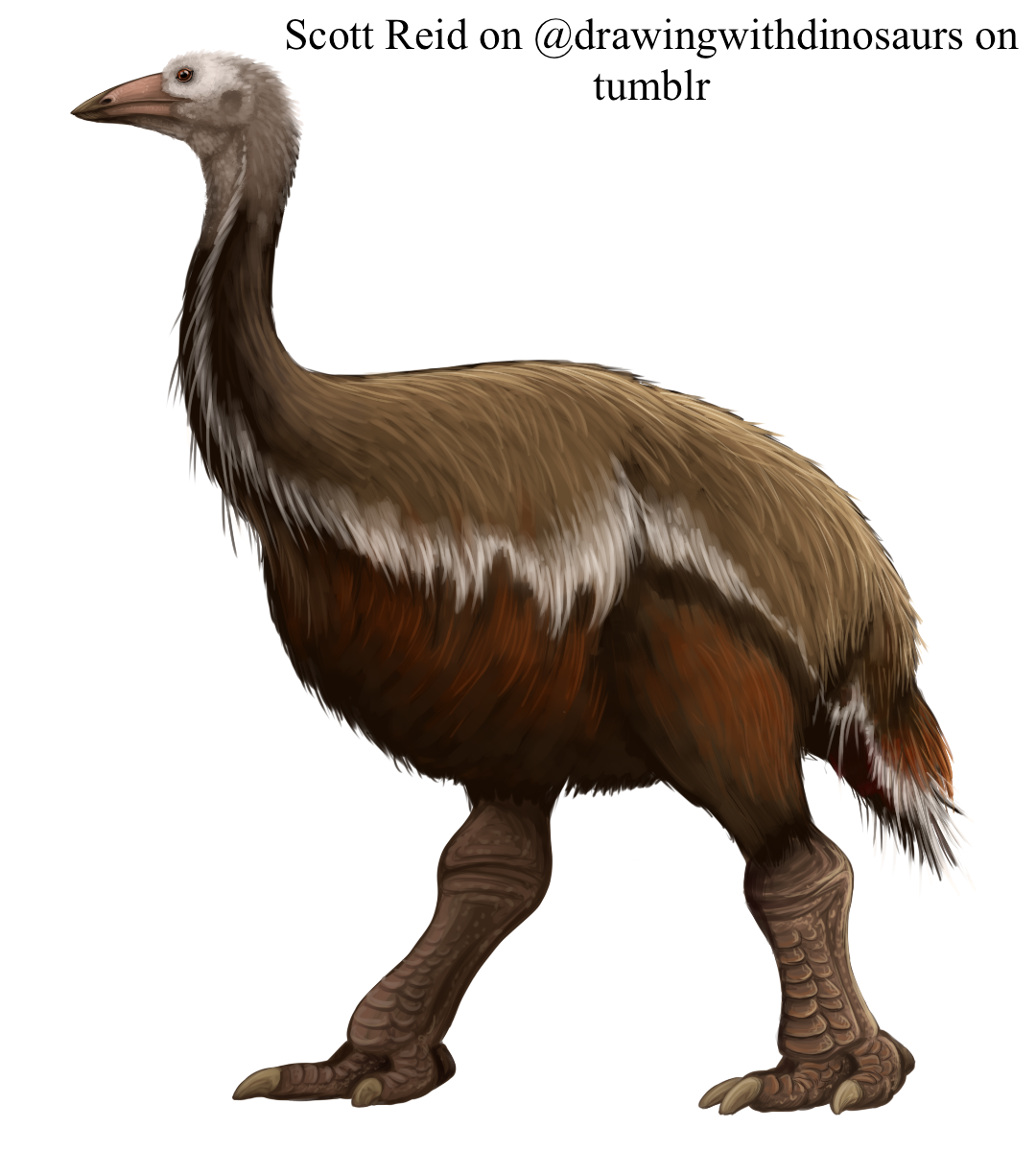Welcome to Aepyornis

Name Definition
Elephant bird
Name Given By
A. maximus/Isidore Geoffroy Saint-Hilaire in 1851, A. hildebrandti/Carlos Burckhardt in 1893
Location
Madagascar, Africa
Classification
Aves, Novaeratitae, Aepyornithiformes, Aepyornithidae
Size
about 3 meters tall, 2 meters long, A. maximus was anywhere around 330-540 kg while A. hildebrandti was around 210-340 kg
Temporal Range
Quaternary period, extinction is around 1000 AD
Ecological niche
large frugivore
Species/Sub Species
A. maximus (type species), A. hildebrandti, there were originally another 8 species that were either reallocated to a different genus, were recognized as a synonym of something else, or is a nomen dubium
Diet
Aepyornis was probably a frugivore and picked off of low lying fruit which thrived in its tropical climate
Introduction
Aepyornis is a genus of extinct ratite birds that lived around the Quaternary and died out eventually during 1000 AD in Madagascar. Most commonly known as the elephant bird, Aepyornis is worthy of this title as it is one of the largest birds to ever have been discovered, in fact, at one time a2 previous species, A. titan, was kept in the Aepyornis genus as the largest bird ever, however, since 2018, it has been moved to the new genus Vorombe which is still known as a close relative of Aepyornis. Because of the size and weight, it should be more than obvious that they were flightless and even lacked the keeled breastbone necessary for stronger muscle chest attachment. More recent studies have also shown that members of the family Aepyornithidae are most closely related to the extant New Zealand kiwi, which indicates that ancestors of the aepyornithids were dispersed all the way to Madagascar and not just in Australia. This may also indicate that Aepyornis had poor eyesight and was more nocturnal just like the kiwi is. However, to make up for this poor vision, studies of Aepyornis’ skull have shown that it had an exceptional sense of smell. This would have helped Aepyornis find enough food to sustain it within its habitat. While we cannot determine exactly when Aepyornis was driven to extinction, we know it was somewhere around the time 1000 AD. There are quite a few theories for the extinction of the elephant bird. The most popular theory is humans. Some Aepyornis fossils have shown signs of butchering, though these are a minority of the fossils and thus a less popular theory. However, a more convincing theory is that humans stole Aepyornis eggs for food. Large amounts of Aepyornis eggshells have been found in association with areas of human inhabitation. This could suggest that while the adults and live offspring were not actively hunted, humans could have stolen the eggs that came with it. This would have caused less offspring every year until to the extent where they became extinct and the last one would die with no offspring. Another theory is that newly introduced birds like chickens entered Madagascar could have carried an avian disease that Aepyornis did not have an immunity to. While Aepyornis DNA has been recovered from the eggshells, however it may be too degraded for the resurrection of this species and more DNA must be found.